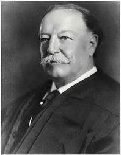
Mechanical televisions were commercially sold from 1928 to 1934 in the United Kingdom, France,[6] the United States, and the Soviet Union. The earliest commercially made televisions were radios with the addition of a television device consisting of a neon tube behind a mechanically spinning disk with a spiral of apertures that produced a red postage-stamp size image, enlarged to twice that size by a magnifying glass. The Baird "Televisor" (sold in 1930–1933 in the UK) is considered the first mass-produced television, selling about a thousand units.
In 1926, Kenjiro Takayanagi demonstrated the first TV system that employed a cathode ray tube (CRT) display, at Hamamatsu Industrial High School in Japan. This was the first working example of a fully electronic television receiver. His research toward creating a production model was halted by the US after Japan lost World War II.
The first commercially made electronic televisions with cathode ray tubes were manufactured by Telefunken in Germany in 1934, followed by other makers in France (1936), Britain (1936), and US (1938). The cheapest model with a 12-inch (30 cm) screen was $445 (equivalent to $9,251 in 2022). An estimated 19,000 electronic televisions were manufactured in Britain, and about 1,600 in Germany, before World War II. About 7,000–8,000 electronic sets were made in the U.S. before the War Production Board halted manufacture in April 1942, production resuming in August 1945. Television usage in the western world skyrocketed after World War II with the lifting of the manufacturing freeze, war-related technological advances, the drop in television prices caused by mass production, increased leisure time, and additional disposable income. While only 0.5% of U.S. households had a television in 1946, 55.7% had one in 1954, and 90% by 1962. In Britain, there were 15,000 television households in 1947, 1.4 million in 1952, and 15.1 million by 1968.
Early electronic television sets were large and bulky, with analog circuits made of vacuum tubes. As an example, the RCA CT-100 color TV set used 36 vacuum tubes. Following the invention of the first working transistor at Bell Labs, Sony founder Masaru Ibuka predicted in 1952 that the transition to electronic circuits made of transistors would lead to smaller and more portable television sets. The first fully transistorized, portable solid-state television set was the 8-inch Sony TV8-301, developed in 1959 and released in 1960. By the 1970s, television manufacturers utilized this push for miniaturization to create small, console-styled sets which their salesmen could easily transport, pushing demand for television sets out into rural areas. However, the first fully transistorized color TV set, the HMV Colourmaster Model 2700, was released in 1967 by the British Radio Corporation. This began the transformation of television viewership from a communal viewing experience to a solitary viewing experience. By 1960, Sony had sold over 4 million portable television sets worldwide.
If you want to read a lot more, go here: https://en.wikipedia.org/wiki/Television_set
- 16 large mushrooms (about 1 pound)
- 1/2 small onion, minced
- 1/4 cup chopped red bell pepper
- 1/2 pound ground Italian sausage
- 2 tablespoons plain bread crumbs
- 3 tablespoons grated Parmesan cheese
- 1/4 teaspoon salt
- 1/4 teaspoon black pepper
- Preheat oven to 350º.
- Remove mushroom stems from caps; finely chop the stems.
- In a large skillet, saute the chopped mushroom stems, the onion, bell pepper, and sausage over medium-high heat until the sausage is crumbled and browned. Remove from heat and stir in remaining ingredients; mix well then stuff each mushroom cap and place on a large rimmed baking sheet.
- Bake 20 minutes, or until mushrooms are tender.
1890 – Agatha Christie, English writer (d. 1976)
1922 – Jackie Cooper, American actor and director (d. 2011)

1940 – Merlin Olsen, American football player and actor (d. 2010)


















